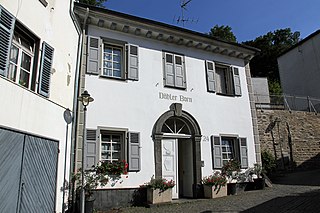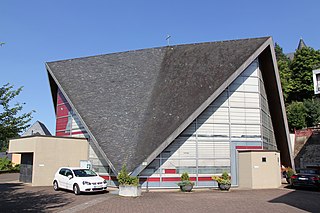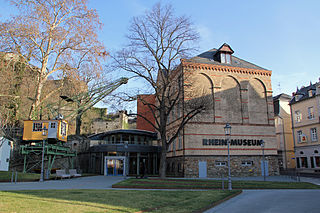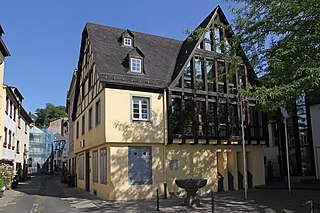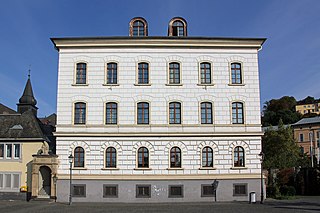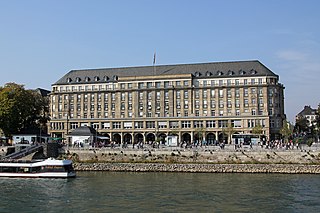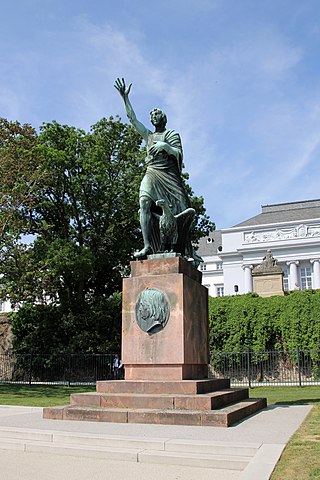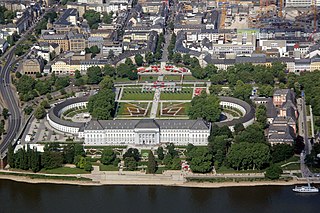Self-guided Sightseeing Tour #2 in Koblenz, Germany
Legend
Tour Facts
3.1 km
151 m
Experience Koblenz in Germany in a whole new way with our free self-guided sightseeing tour. This site not only offers you practical information and insider tips, but also a rich variety of activities and sights you shouldn't miss. Whether you love art and culture, want to explore historical sites or simply want to experience the vibrant atmosphere of a lively city - you'll find everything you need for your personal adventure here.
Activities in KoblenzIndividual Sights in KoblenzSight 1: Dähler Born
The Dähler Born (spring in the valley) is a well house for a sour water spring in Koblenz. The water from the spring in the Ehrenbreitstein district is a Na-Mg-Ca-HCO3 acidulant.
Sight 2: Rheinburg
The Rheinburg is a castle-like villa in Koblenz, Germany. It is located in the Ehrenbreitstein district and goes back to the Klausenberg plant, which was built as part of the Ehrenbreitstein city fortifications between 1827 and 1833. Thus, this caponier belonged to the Niederehrenbreitstein system of the Prussian fortress of Koblenz.
Sight 3: Klausenbergkapelle
The Klausenberg Chapel is a chapel in Koblenz, Germany. The Marien-Kapelle, built in the 19th century, stands in the Ehrenbreitstein district and has a memorial plaque for the Electoral Trier lieutenant Freiherr Arnold von Solemacher (1766–1795), who died here in 1795.
Sight 4: Heilig-Kreuz-Kirche
The Holy Cross Church is a Catholic church in Koblenz, Germany. The former parish church in the Ehrenbreitstein district was built between 1962 and 1964 on the site of a predecessor building from the 18th century. The neighbouring Heribert Tower has served as the church's bell tower since 1848. The church is dedicated to the Holy Cross, on which Jesus died.
Sight 5: Rheinmuseum
The Rhein-Museum Koblenz is a cultural history museum in Koblenz that shows life on the Rhine from various aspects. Founded in 1912, the museum focuses on shipping, ecology, hydrology, Rhine romanticism, tourism, economy and history.
Sight 6: Mutter-Beethoven-Haus
The Birthplace of Beethoven's mother is a cultural heritage monument in Ehrenbreitstein, on the River Rhine opposite Koblenz, in Rhineland-Palatinate, Germany. Maria Magdalena Keverich, mother of the composer Ludwig van Beethoven, was born here in 1746; it is now a museum.
Sight 7: Klosterkirche St. Franziskus, St. Philippus Ap. und Karl Borromäus
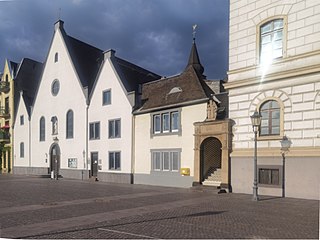
The Capuchin Monastery of Koblenz was a monastery in Koblenz, which was operated from 1627 to 2008 with interruptions by Capuchins. The monastery in the Ehrenbreitstein district was the seat of the provincial administration of the Rhenish-Westphalian Order Province from 1908 to 2007. The monastery complex includes the baroque church of St. Francis. Since 2013, parts of the monastery have been used by a convent of the Teutonic Order.
Sight 8: Konradhaus
The Konradhaus is a cultural monument in Koblenz-Ehrenbreitstein, which was built in 1874 as a casino and officers' dormitory. After that, it was used by the Capuchin monastery in Koblenz and as a theatre.
Sight 9: Pegelhaus
The Pegelhaus is a former Rhine crane in the Rhine facilities of Koblenz, which is now used as a Rhine gauge and restaurant.
Sight 10: Koblenzer Hof
The former Grand-Hotel Coblenzer Hof is a monumental hotel building in the Rhine facilities of Koblenz. Today, the building houses the Federal Office of Bundeswehr Equipment, Information Technology and In-Service Support (BAAINBw), but due to the risk of collapse, most of the building cannot be used. Together with the neighbouring Prussian government building, it forms an ensemble on the banks of the Rhine that characterises the cityscape.
Sight 11: Struktur- und Genehmigungsdirektion Nord
The Structure and Approval Directorate North in Koblenz is a higher state authority that is responsible for certain tasks in the north of the state of Rhineland-Palatinate as well as for some tasks throughout the state.
Wikipedia: Struktur- und Genehmigungsdirektion Nord (DE), Website
Sight 12: Joseph-Görres-Denkmal
The Joseph Görres Monument in Koblenz was erected in honour of the publicist Joseph Görres, who was born in the city. The monument stands behind the Electoral Palace in the Rhine grounds and was inaugurated on 24 June 1928. The bronze sculpture on a pedestal made of Rochlitz porphyry was created by the Düsseldorf sculptor Richard Langer.
Sight 13: Kurfürstliches Schloss
The Electoral Palace in Koblenz, was the residence of the last Archbishop and Elector of Trier, Clemens Wenceslaus of Saxony, who commissioned the building in the late 18th century. In the mid-19th century, the Prussian Crown Prince had his official residence there during his years as military governor of the Rhine Province and the Province of Westphalia. It now houses various offices of the federal government.
Share
How likely are you to recommend us?
Disclaimer Please be aware of your surroundings and do not enter private property. We are not liable for any damages that occur during the tours.
GPX-Download For navigation apps and GPS devices you can download the tour as a GPX file.
